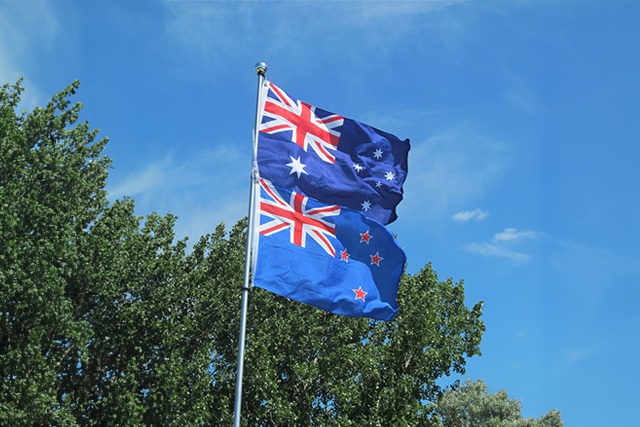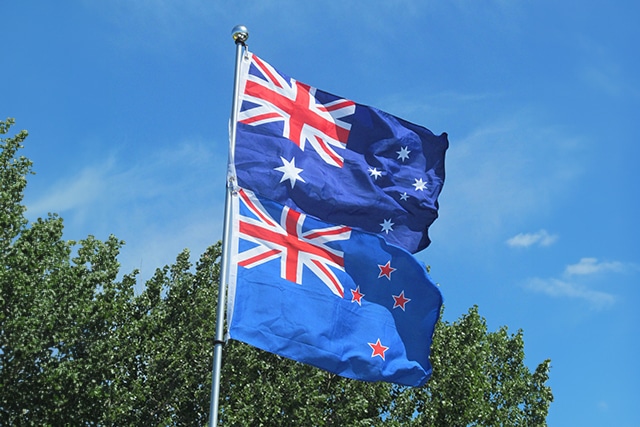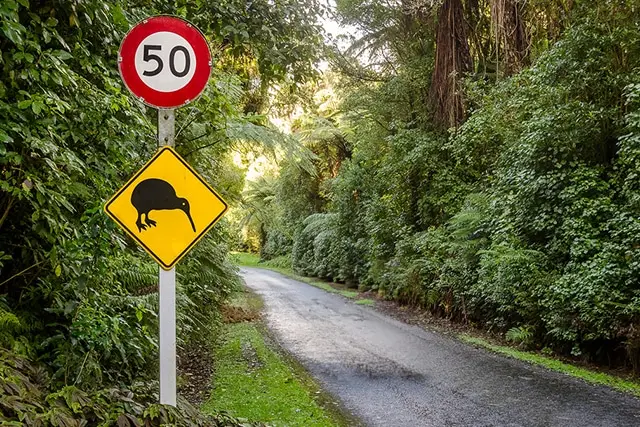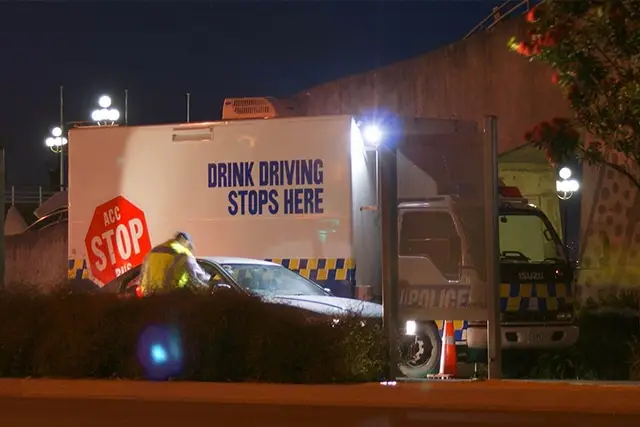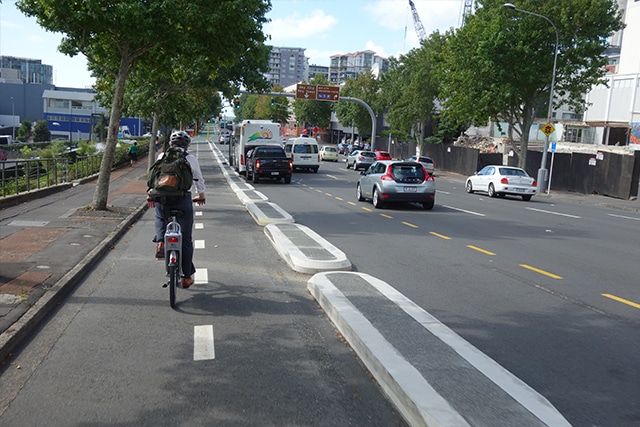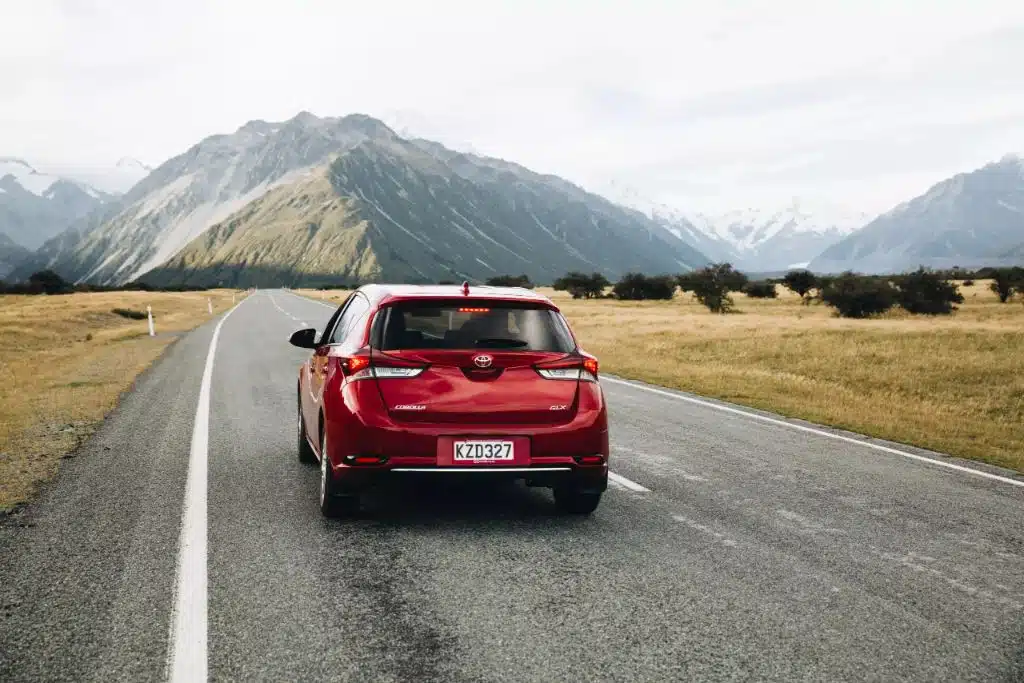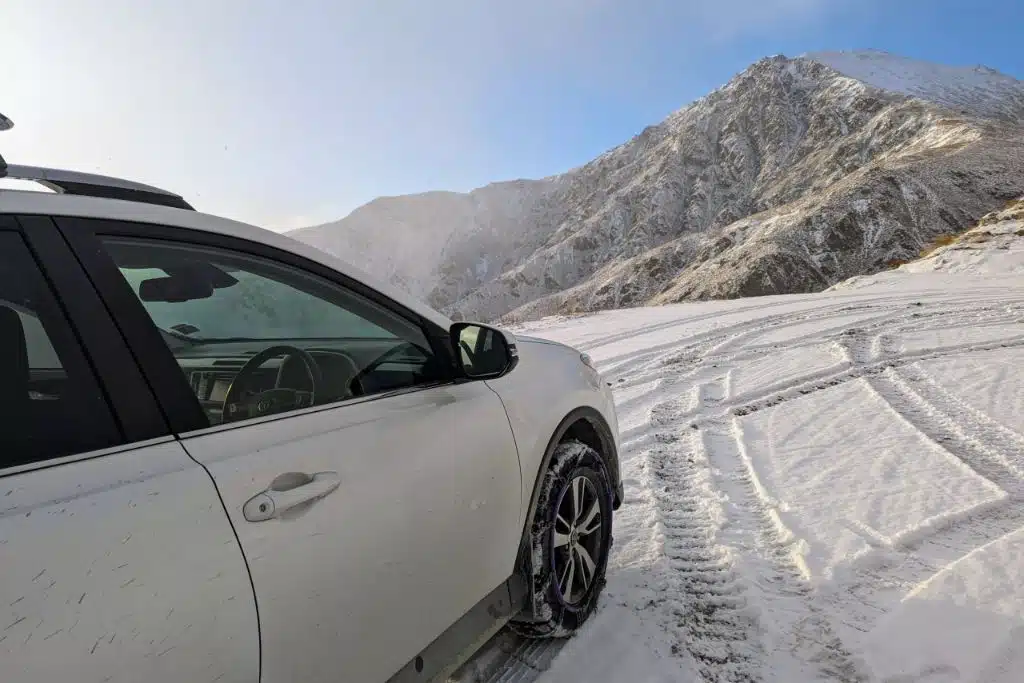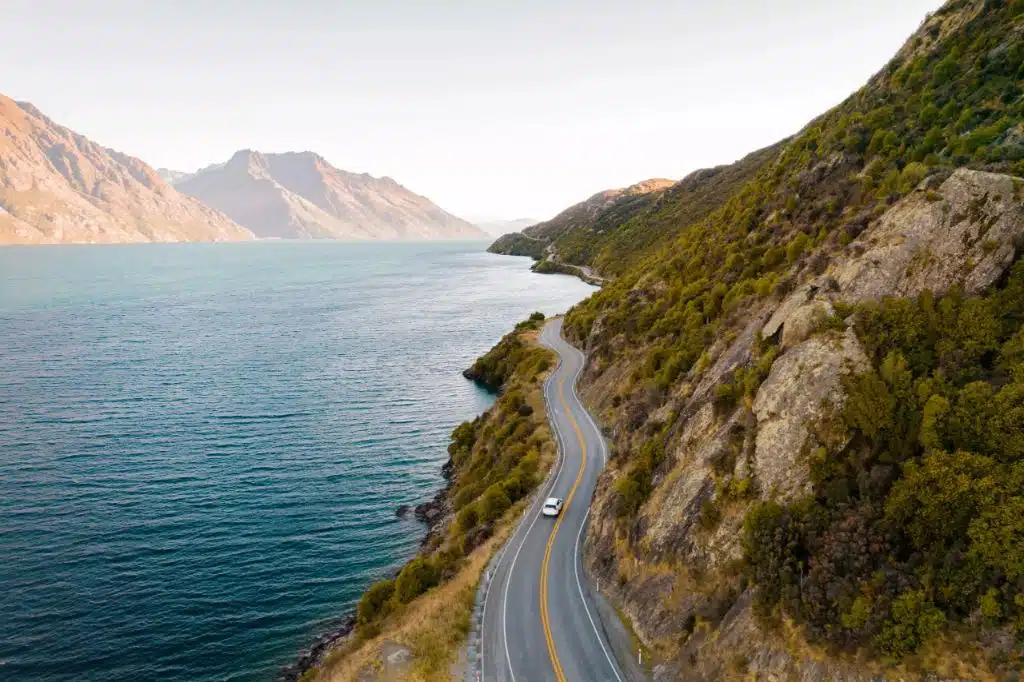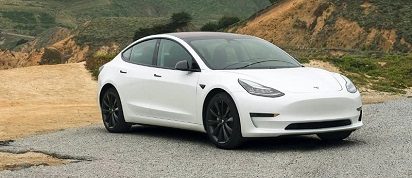With New Zealand and Australia sharing many similarities, it’s easy to think that these neighbours’ driving rules are no different.
However, that isn’t the case. That’s why we’ve assembled this complete road rules guide for Australian travellers heading to New Zealand.
We’ll cover all the different driving rules to be aware of before you make the cross-Tasman journey. We’ll also provide some additional tips for driving in New Zealand.
Aussies looking for the holiday of a lifetime in New Zealand need look no further than GO Rentals for their perfect hire car. Browse our fleet of vehicles and start planning your Kiwi adventure today.
Can I drive in New Zealand with an Australian licence?
Yes, you can drive in New Zealand with an Australian licence. Holders of Australian driver licences do not need to apply for an international driving permit.
Australian drivers can drive for up to 12 months before needing to switch over to a New Zealand licence. Provisional drivers can also drive in New Zealand, provided they adhere to the conditions of their overseas licence. One exception is that provisional drivers aren’t required to display “P” plates.
However, provisional drivers cannot hire a vehicle from GO Rentals. For more information, check out our complete breakdown of driving in New Zealand with an Australian licence.
New Zealand vs Australia: The key differences on the road
Here’s a snapshot of the most significant differences in road rules between Australia and New Zealand for travellers to know about:
- New Zealand’s road rules are the same all over the country. In Australia, there are subtle differences in rules, signage and penalties from jurisdiction to jurisdiction.
- In New Zealand, anyone under the age of 20 must have a blood alcohol level of 0. In Australia, this rule applies to all provisional drivers, and is not based on age.
- The default maximum speed on the open road in New Zealand is 100 km/h, with selected motorways and expressways allowing a speed limit of 110km/h. In parts of Australia’s Northern Territory, a speed limit of 130 km/h is allowed. However, in other jurisdictions, the highest speed limit found is 110 km/h.
Read on for a more in-depth breakdown of the differences and similarities in road rules between New Zealand and Australia.
Differences between New Zealand and Australian road rules
There are a few critical differences for Australians to be aware of when driving in New Zealand. With an understanding of these distinctions, you can explore New Zealand with confidence on your self-driving holiday.
Jurisdiction
In Australia, road rules are administered by each state and territory. That means there are subtle differences around the country regarding rules, signage and penalties.
In New Zealand, traffic rules are administered nationally. The same rules and signs are in place all over the country.
Speed limits
The maximum speed limit that a light vehicle can travel in New Zealand is 100km/h, with a select number of roads allowing 110km/h. In urban areas, the maximum speed limit is 50 km/h.
The highest speed limit found in Australia is in the Northern Territory. On the Stuart, Barkly, Victoria and Arnhem Highways, the maximum speed limit is 130 km/h.
Outside of these highways, the default speed limit for light vehicles outside built-up areas in Australia is 100-110 km/h, depending on the jurisdiction. In built-up areas, the default speed limit for light vehicles is 50-60 km/h, again depending on jurisdiction.
School zones
Both New Zealand and Australia have school zones around many schools at certain times of the day. Usually, school zones have a speed limit of 40km/h.
However, some school zones in Australia have speed limits of 30km/h.
Heavy vehicles
In New Zealand, heavy vehicles are defined as vehicles with a gross vehicle mass (GVM) over 3,500kg. In Australia, heavy vehicles are defined as vehicles with a GVM over 4,500kg.
In both countries, you need to have a special licence to drive a heavy vehicle. For New Zealanders, there are 4 categories of heavy vehicle licence. In Australia, there are 5.
Throughout most of Australia, heavy vehicles are limited to a maximum speed of 100km/h. In New Zealand, heavy vehicles have a maximum speed limit of 90km/h.
For more detailed information on heavy vehicles in each country, consult the New Zealand Transport Authority, and the National Heavy Vehicle Regulator.
Alcohol limit when driving
In both New Zealand and Australia, most drivers have a limit of no more than 50 milligrams of alcohol per 100 millilitres of blood when driving.
In New Zealand, if you are under the age of 20, you must have no detectable alcohol in your system when driving.
Australia has a similar rule in place for provisional drivers. Regardless of age, provisional drivers must have no alcohol in their system when driving.
Both Australia and New Zealand have random breath testing regimes in place.
Drugs and driving
In both New Zealand and Australia, you must not drive if you have taken any kind of drug that may affect your driving ability.
In New Zealand, a 2023 law is now in place covering 25 specific drugs. Drivers who are above the legal driving limit for any of these drugs face specific penalties, which can include imprisonment.
In Australia, different jurisdictions have legislated drug offences differently. Most jurisdictions have roadside mobile drug testing (MDT) regimes in place.
In New South Wales, MDTs test for ecstasy, cannabis, cocaine and methamphetamine. Police officers can also test for other drugs with blood and urine tests if they have a reasonable suspicion a driver is impaired.
New Zealand lawmakers are currently in the process of implementing roadside drug testing. At present, police can conduct impairment checks if they have good cause to suspect a driver has used drugs.
They can then collect blood samples to detect the presence of drugs in a driver’s system.
Hook turn
Hook turns are a type of turn in which a car turns right from the left-hand lane. It requires a driver to travel into the middle of the intersection. Once the traffic lights of the road they are turning into have turned green, they may make the turn.
Hook turns are allowed when instructed by road signs, and only take place in Victoria. In New Zealand, this type of turn is not permitted for cars.
Cyclists
Rules around sharing the road with cyclists are similar in Australia and New Zealand. However, there are a few small differences.
In most Australian jurisdictions, drivers must allow a distance of 1 metre when passing cyclists, or 1.5 metres when travelling over 60km/h.
New Zealand is not as strict about passing cyclists. The NZTA says that overtaking drivers should “allow at least 1.5 metres between you and the cyclist if you can.”
Additionally, in some Australian jurisdictions like New South Wales and Victoria, cyclists must ride in cycling lanes when they are provided.
This is not the case in New Zealand. Cyclists can choose whether or not they want to use a bike lane.
Parking
There are many similarities in parking rules between Australia and New Zealand. Just a few examples are:
- You cannot double park.
- You cannot park on a traffic island.
- You cannot park on pedestrian crossings.
However, there are a couple of differences, too. Some examples include:
- In New Zealand, you cannot park closer than 1 metre to a vehicle entrance. Generally, Australian jurisdictions have not legislated specific rules on this. However, drivers cannot obstruct access to vehicle entrances.
- In New Zealand, you cannot park within 50 centimetres of any fire hydrant, unless a licenced driver who can move the car remains within the vehicle. Rules around this vary in Australia. For example, in New South Wales, you cannot park within 1 metre of a fire hydrant, and there is no provision for a licenced driver to remain with the vehicle.
- In New Zealand, you cannot park closer than 6 metres to an intersection. In many Australian jurisdictions, you generally cannot park closer than 10 metres to intersections without traffic lights. You generally cannot park closer than 20 metres to intersections with traffic lights. Both of these rules do not apply where signage explicitly indicates that you may park within 10 or 20 metres of the intersection.
Consult the NZTA or your local Australian government authority for further parking information.
Similarities between New Zealand and Australian road rules
The following areas are broadly similar when driving in Australia and New Zealand. However, in many cases, there are still some minor distinctions to be aware of.
Driving on the left-hand side of the road
In both Australia and New Zealand, you must drive on the left-hand side of the road at all times.
Signs
Road signs are very similar in Australia and New Zealand. Australian travellers should have no difficulty interpreting these signs when they cross the Tasman.
However, there’s no harm in familiarising yourself with New Zealand road signs before making your journey.
One area of difference is regulatory signs which indicate that drivers must go in a specific direction. In New Zealand, these signs are blue and white, with no writing on them. In Australia, these signs are black-and-white, with words like “Only” or “Keep Left” written on the bottom of the sign.
Traffic lights
Both Australia and New Zealand use red, yellow and green traffic lights. Red means stop and green means go (if it is safe to do so).
Yellow means stop, unless you cannot safely stop before the ‘Stop’ line. Flashing yellow lights generally indicates that the lights are not working, and you should follow standard give way rules.
Both countries also use red, yellow and green arrow traffic lights. In Australia, flashing yellow lights means you can turn as long as there are no pedestrians crossing.
Both countries have priority lights for buses, indicated by a white “B”. When this light is shown, buses are allowed to travel through the intersection.
Additionally, both countries also have traffic lights for bicycles at some intersections. In Australia, there are also occasionally special traffic lights for trams, represented by a white “T”. These lights are not present in New Zealand.
Winter driving
In both Australia and New Zealand, you must carry snow chains when driving in specific areas. For instance, any 2-wheel drive vehicles entering Australia’s Kosciuszko National Park between the June King’s Birthday and October Labour Day long weekends must carry snow chains.
On New Zealand’s Milford Sound Highway, road condition signs will indicate when snow chains need to be carried. If you drive past these signs without carrying snow chains in your vehicle, you may be fined up to $750.
Child restraints and seat belts
In New Zealand and Australia, all vehicle occupants must wear a seat belt if it is fitted in the vehicle. Children under the age of 7 must travel in an approved child restraint in cars and vans.
Using mobile phones when driving
In New Zealand and Australia, it is illegal to use a hand-held mobile phone while driving. However, you can use your phone in a hands-free manner, or if it is fixed to a phone holder.
Overtaking
Both New Zealand and Australia have strict rules on when you can overtake another vehicle. In New Zealand, you can overtake if there is a single dashed white line, or a dashed white line on your side of the road and an unbroken yellow line
In Australia, the same rules are in place. The only difference is that Australia has unbroken white lines to indicate you cannot overtake the vehicle in front of you.
Police and emergency vehicles
In New Zealand, if an emergency vehicle such as an ambulance, fire engine or police car is coming behind you or towards you with sirens and/or flashing lights, you must pull over and stop if necessary to allow it to pass.
If you are followed by a police car with sirens and/or flashing lights, you must pull over and stop as soon as it is safe to do so. These rules are the same in Australia.
Some Australian jurisdictions also have rules requiring drivers to slow down to 40 km/h when passing stationary law enforcement and emergency vehicles. No such rule exists in New Zealand.
More tips for driving in New Zealand
Understanding road rules isn’t all you need to prepare for a New Zealand self-driving holiday. There are many more quirks to driving in New Zealand that you won’t find in legislation:
- Toll roads: There are 3 toll roads in New Zealand, all on the North Island. They are in close proximity to Auckland and Tauranga. If these areas aren’t a part of your road trip, you don’t need to worry about paying any tolls.
- Unsealed roads: Unsealed roads are a large proportion of New Zealand roads. Slow down and drive with care when on these roads.
- Prepare for losing reception: On your epic New Zealand road trip, you may find yourself outside of phone reception. Prepare for this by downloading your map ahead of time.
For more information, check out our complete list of New Zealand driving rules for tourists.
Frequently asked questions
Can I drive in New Zealand with an Australian P1 or P2 driver licence?
Yes, you can legally drive in New Zealand with an Australian P1 or P2 provisional driver licence. However, GO Rentals does not allow these drivers to rent or drive our vehicles.
Is driving in New Zealand difficult?
For most travellers, driving in New Zealand should not be very difficult. New Zealand’s cities are relatively small and feature relaxed conditions compared to many other major cities.
The country’s more rural roads can be subject to poor weather conditions. They can also be narrow, windy and hilly. However, these roads are often very quiet, which can make driving easier.
Additionally, New Zealand features very few motorways. Much of the country is covered by roads with only a single lane in each direction. This can also make driving easier for some travellers.
See our complete guide to New Zealand roads for more information.
Is it illegal to drive too slow in New Zealand?
Yes, you can be ticketed for driving too slowly in New Zealand. In 2018, 120 drivers were issued infringement notices for “slow and inconsiderate” driving in Auckland alone.
Explore New Zealand with GO Rentals
Now that you have a complete understanding of the differences in road rules from Australia to New Zealand, there’s no reason to hesitate to set off on your self-driving holiday.
GO Rentals is the perfect partner for your New Zealand exploration. We have an exceptional range of vehicles, making it easy to find the right one for you.
With 9 locations around New Zealand, our cars can carry you along any itinerary. We even offer one-way car rental to make planning your journey as simple as possible.
Book your GO Rentals vehicle today and kick off the adventure of a lifetime.
Book a vehicle for this trip
We recommend:
Premium EV
Tesla Model 3
- Seats
- 5 seats
- Large Bags
- 2
- Small Bags
- 2
- Transmission
- Auto trans
